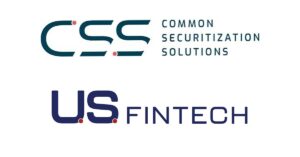Speed is of the essence when it comes to originating a mortgage. People are trying to quickly move into a new home and satisfaction often comes down to knowing what is happening with their loan as soon as they ask for the information.
This has traditionally been difficult because so many third parties are relied upon to complete the loan origination process. It has often been enormously challenging to keep track of where all the pieces of information are as they relate to the borrower’s transaction.
But times are changing, and the result will be a better process and more information as the work of originating a mortgage moves toward completion. Mortgage originators who understand this will possess a competitive advantage over their industry peers who don’t.
Fits and starts
Over the years, the evolving needs of borrowers — as well as the continuing obligation to ensure the integrity, soundness and protections of the lending process — introduced so many complexities that traditional paper forms became quite difficult to manage. With the passage of the U.S. Electronic Signatures in Global and National Commerce Act, and the Uniform Electronic Transactions Act, the financial-services industry was granted permission to conduct business electronically. Twenty years later, the mortgage industry is still making that transition.
What may appear to be a simple change to eschew paper in favor of electronic data exchanged between technology platforms is in reality much more elaborate. It requires not only new technology but new ways of thinking about the process of originating a mortgage. It also requires full acceptance by state regulators, borrowers and even those lenders who still cling to traditional methods.
Over the years, the mortgage industry developed its paperless lending infrastructure in fits and starts, system by system. As each new tool was developed, whether for appraisal management, faster flood certifications or electronic asset verification, it was cobbled into the lender’s loan origination system (LOS).
The merits of “best of breed” were debated, in which each piece of the puzzle was chosen from among all of the available options, versus an all-in-one model in which the lender’s LOS provider made a more limited set of options available and took responsibility for integrating them into the system. In either case, each time a new technology was added to the stack, it complicated the process and increased the risk of friction. Correcting problems was expensive and time-consuming because there was often no single party responsible. Even when the LOS provider took responsibility, the integrations were not trivial.
Much of the technology that has been developed over the past 20 years was created specifically to work around these issues, but better technology is only part of the solution. To be effective, these tools must be wired together in a manner that provides a complete solution.
Well-designed ecosystem
Today, it is possible to construct a mortgage LOS that can interact automatically with third-party data providers using a robust application programming interface layer. This reduces the friction and eliminates the problems the industry has experienced in the past. It makes it possible to move more quickly, efficiently and at a much lower cost.
This only works if the LOS is situated at the center of a well-designed technology ecosystem in which each tool feeds the required information into the central LOS. This is the infrastructure that will support the future of mortgage lending and it goes well beyond the third-party integrations required for loan origination.
In the future, success will hinge upon not only choosing the best loan origination technology on the market but also by factoring into the decision the ecosystem it resides within. Without seamless access to other systems that provide the data required to close the mortgage, friction will remain and efficiency will be difficult to attain.
The components of the chosen ecosystem will depend upon a company’s needs and will constitute the “secret sauce.” Typical elements will include e-lending; web-based and mobile borrower experiences; and digitized business analytics, compliance and work-flow, among other things.
Join 210,000 mortgage professionals
Get the news, trends and industry updates in your inbox to become a better mortgage originator. Subscribe to emails below.
Digital future
The future of the mortgage is digital and its ecosystem should be built around this e-lending concept, with seamless connections between components, partners and systems. By gaining access to electronic data already available on borrowers, the process will go faster and the borrower will need to respond to fewer requests for information.
Today’s borrowers also are demanding a fully digital experience that follows them across mobile devices. This is a critical component that must be built into the ecosystem. A 2019 Fiserv survey about borrowing and wealth management found that digital loan applications are on the rise.
Many people with a home loan (71%) are “somewhat or very comfortable” with the concept of completing a loan application online using a laptop or desktop computer, up from 67% in the 2018 survey. The most noteworthy shift involves mobile applications, with 41% of respondents last year saying they are comfortable using these tools, as compared to only 29% in the year prior.
Even in the digital lending world, paper documents and borrowers who prefer them will remain, at least for the foreseeable future. This necessitates easy access to services that can digitize these forms intelligently and efficiently through optical character recognition software (which translates scanned images of text) and intelligent character recognition, which can learn different fonts and styles of handwriting.
Business analytics must be hard-wired into the ecosystem for compliance and loan quality reasons. This also is essential for harvesting business insights that will allow the institution to improve every aspect of its lending process. Business intelligence has matured to the point that financial institutions can now pull important insights out of their data for many purposes. Chief among these is compliance, due to the high cost of noncompliance.
The days of waiting for a human to move the process on to the next task in the workflow are over. Today, smart systems move the loan file through the origination process without the need for human intervention. The efficiencies gained in this way are huge.
Some lenders may require additional systems to be part of their ecosystem but, in any event, both the ecosystem and the LOS are required. Together, they form the new infrastructure required for modern digital lending.
• • •
To be most effective, a strong processing hub that sits at the center of the mortgage ecosystem is required. This role has typically fallen to the loan origination system and it likely will continue to do so for many years. The modern LOS is still the ideal technology to marshal the mortgage through the process to the closing table. A fully integrated, data-driven loan origination system can help save money while optimizing resources. •
Author
-
Craig Evans is vice president of operations and digital lending at Fiserv Inc., a leading global provider of financialservices technology solutions. He has 35-plus years of experience in the banking and mortgage industries, working previously with leading U.S. banks such as Ally Financial, Bank of America, Washington Mutual, Fleet National Bank and First National Bank of Chicago. Evans resides with his wife Lori in Charlotte. He has four children and four grandchildren.
View all posts






